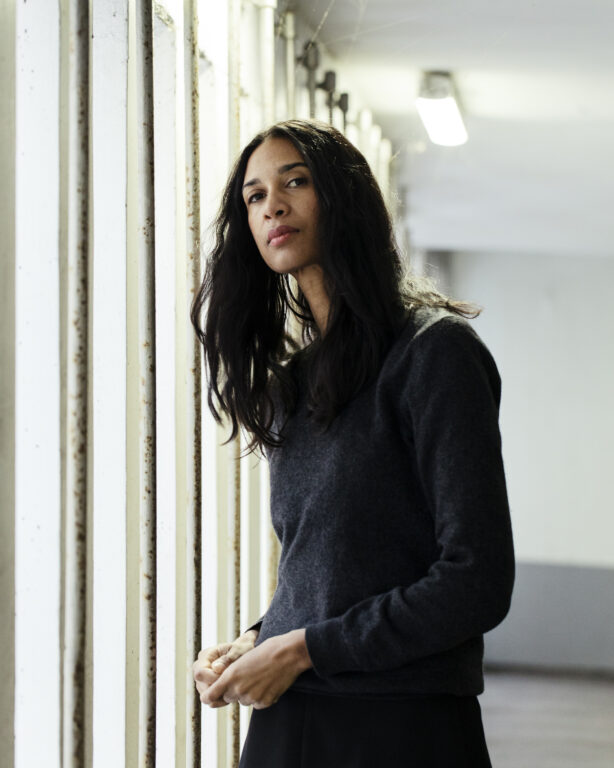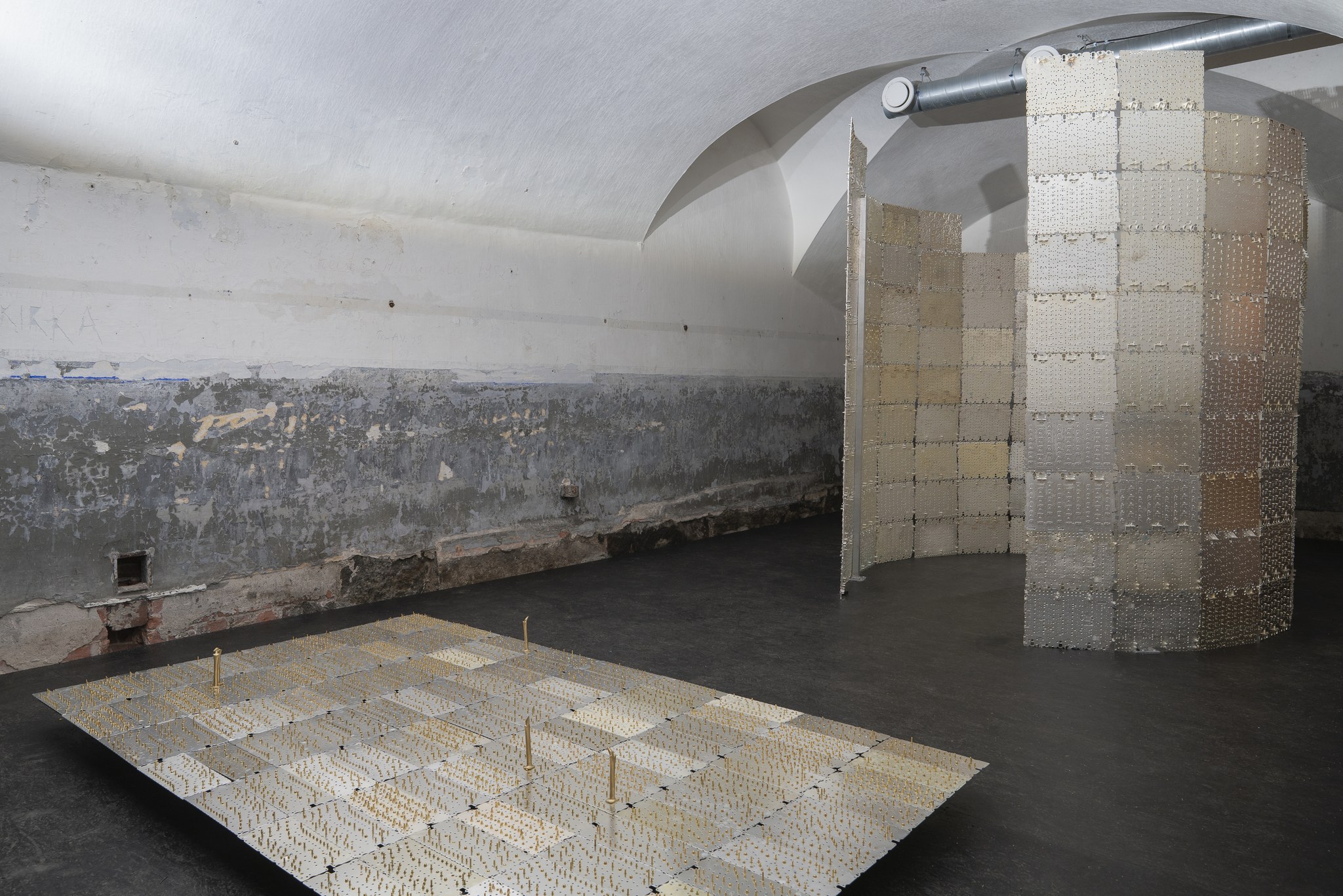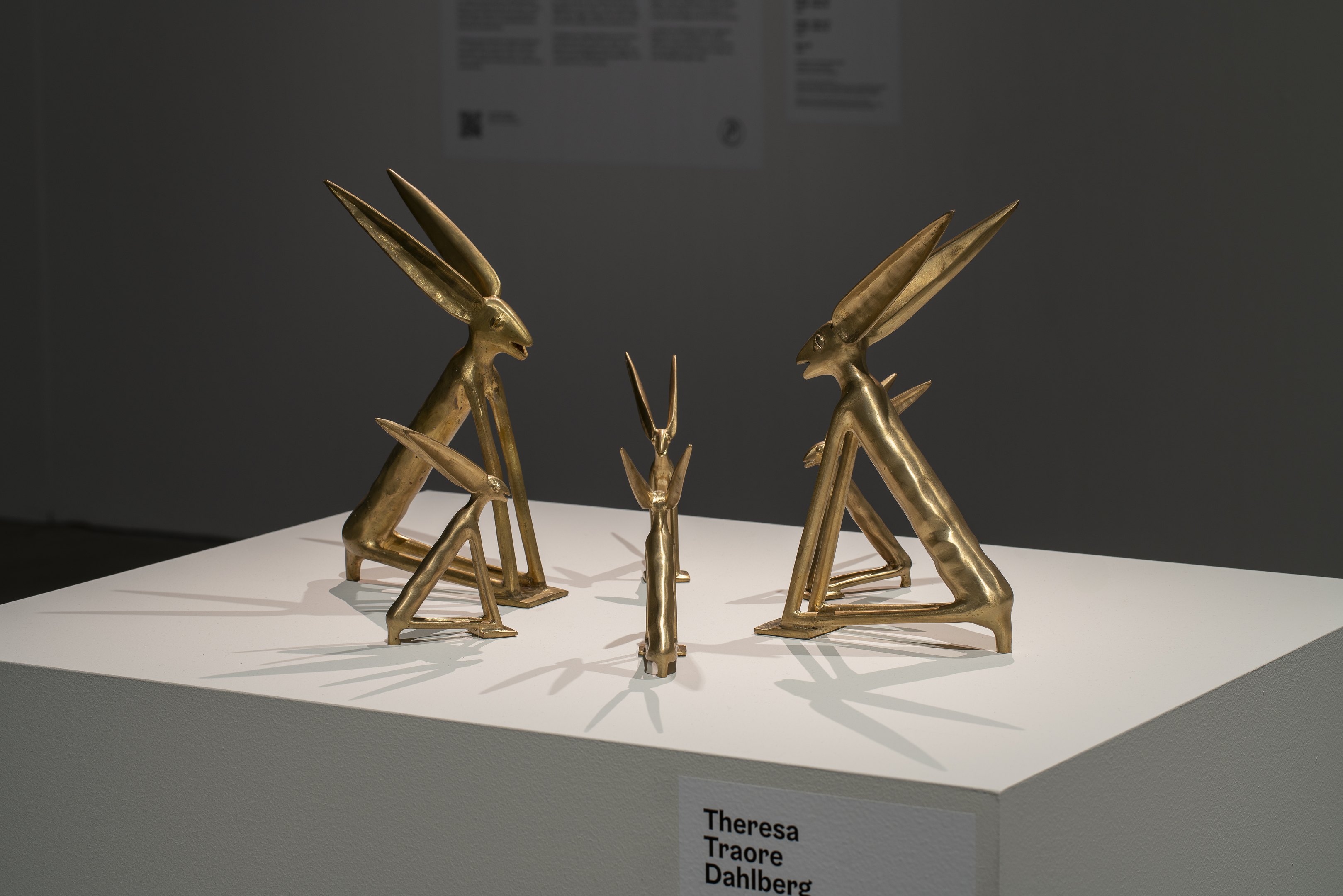
Theresa Traore Dahlberg’s (b. 1983) artistic practice often takes its cue from the material itself. She examines the origins of discarded objects both as physical materials and as containers of industrial memory, shedding light on their fraught history and shifting meanings through the personal stories of the workers who made them.
Traore Dahlberg draws on her personal experience of being anchored in two divergent sociopolitical realities: Sweden and Burkina Faso.
Photo: Svante Örnberg

Theresa Traore Dahlberg: Signals Beyond, 2025. Helsinki Biennial 8.6.–21.9.2025, Vallisaari Island. Photo: HAM / Helsinki Biennial / Sonja Hyytiäinen
Signals Beyond, 2025
Artwork location: Vallisaari Island
In Signals Beyond, Traore Dahlberg’s installation in Vallisaari Island’s Alexander Battery, recycled materials – metals and minerals excavated from the Earth – claim their right to exist in a new form proposed by the artist. In their previous life, the discarded components transmitted signals and served as tools of communication. Now taking the form of abstracted, drone-like birds, they interact with their environment in altered ways. In many cultures and mythologies, birds are associated with the afterlife, serving as messengers between the divine and earthly realms.
Supported by The Swedish-Finnish Cultural Foundation, Embassy of Sweden

Theresa Traore Dahlberg: Hakili – Hare IV, 2021. Helsinki Biennial 8.6.–21.9.2025, HAM Helsinki Art Museum. Photo: HAM / Helsinki Biennial / Sonja Hyytiäinen
Hakili – The Hare IV, 2021
Hakili – The Hare VI, 2022
Idrix III, 2023
Artworks’ location: HAM Helsinki Art Museum
Hakili – The Hare IV and Hakili – The Hare VI presented at HAM take their shape from a small hare sculpture found in the collection of Stockholm’s Museum of Ethnography. The sculpture originated from the same city in Burkina Faso where the artist’s grandmother once lived. Hares often appear as a cunning, mischievous tricksters in folktales and in the many African legends told to the artist by her grandmother in her childhood. All these threads converge in the form and material of Traore Dahlberg’s hare sculptures, which carry both private and universal significance.
Idrix III in HAM’s south gallery was made in collaboration with a bronze foundry in Burkina Faso. The sculpture is based on the Senufo bird figure and African fable. The bird’s shape is inspired both by Futurism and stories told by the artist’s grandmother. The Senufo bird represents the physical and intellectual duality of life, signifying intellectual power in particular.
Supported by The Swedish-Finnish Cultural Foundation, Embassy of Sweden